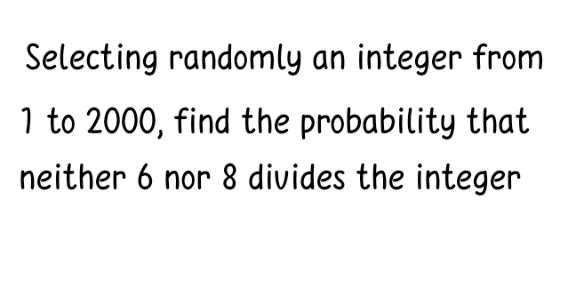Question Number 201527 by cortano12 last updated on 08/Dec/23

Answered by AST last updated on 08/Dec/23

$$#\left(\mathrm{6}\:{or}\:\mathrm{8}\right)=#\left(\mathrm{6}\right)+#\left(\mathrm{8}\right)−#\left(\mathrm{6}{n}\mathrm{8}\right) \\ $$$$#\left(\mathrm{6}\right)=\lfloor\frac{\mathrm{2000}}{\mathrm{6}}\rfloor=\mathrm{333};#\left(\mathrm{8}\right)=\lfloor\frac{\mathrm{2000}}{\mathrm{8}}\rfloor=\mathrm{250} \\ $$$$#\left(\mathrm{6}{n}\mathrm{8}\right)=#\left(\mathrm{24}\right)=\lfloor\frac{\mathrm{2000}}{\mathrm{24}}\rfloor=\mathrm{83} \\ $$$$\Rightarrow#\left(\mathrm{6}\:{or}\:\mathrm{8}\right)=\mathrm{500} \\ $$$$\Rightarrow{Probability}=\frac{\mathrm{2000}−\mathrm{500}}{\mathrm{2000}}=\frac{\mathrm{3}}{\mathrm{4}} \\ $$
